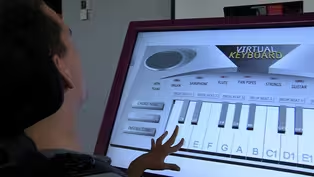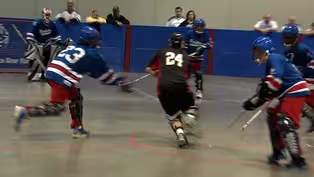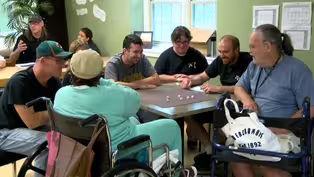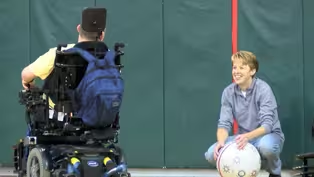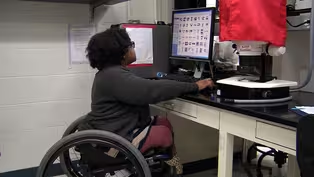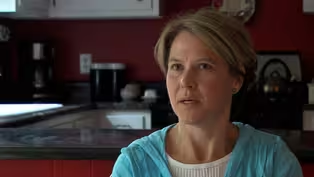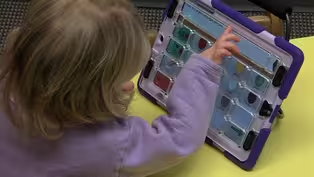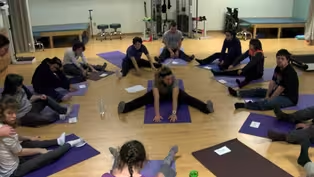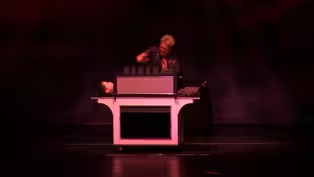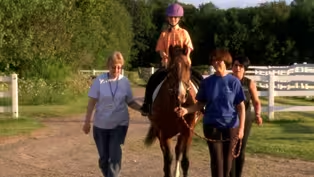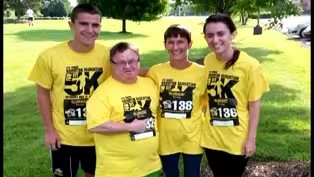Move To Include
Assistive Technology
Special | 2m 21sVideo has Closed Captions
Charles uses eye gaze technology and a device called a Dynavox to help him communicate.
We travel to the Museum of disABILITY History to meet Charles. Charles uses eye gaze technology and a device called a Dynavox to help him communicate.
Problems playing video? | Closed Captioning Feedback
Problems playing video? | Closed Captioning Feedback
Move To Include is a local public television program presented by WXXI
Move To Include
Assistive Technology
Special | 2m 21sVideo has Closed Captions
We travel to the Museum of disABILITY History to meet Charles. Charles uses eye gaze technology and a device called a Dynavox to help him communicate.
Problems playing video? | Closed Captioning Feedback
How to Watch Move To Include
Move To Include is available to stream on pbs.org and the free PBS App, available on iPhone, Apple TV, Android TV, Android smartphones, Amazon Fire TV, Amazon Fire Tablet, Roku, Samsung Smart TV, and Vizio.
More from This Collection
Homework Hotline, designed for grades 4 through 12, provides the tools students need to succeed both in and out of the classroom, & supports academic achievement across a variety of learning standards. This collection is specifically curated by Move to Include & presents in-depth stories & profiles of individuals & organizations who are working to make our community inclusive & accessible for all.
Video has Closed Captions
How touch screen technology is making learning more accessible for all students. (2m 58s)
Video has Closed Captions
See how floor hockey is helping these players both in and out of the rink. (2m 16s)
Video has Closed Captions
A program that specializes in working with individuals suffering from traumatic brain injury. (4m 6s)
Video has Closed Captions
Recreational activities through adaptive sports and inclusive recreation. (5m 27s)
Video has Closed Captions
Genomics and how scientists use computers to analyze data. (2m 55s)
Video has Closed Captions
Kerrie Giesen tells us what it is like to have Multiple Sclerosis and how her life has changed. (3m 11s)
Video has Closed Captions
Many people with disabilities were sent to live in institutions away from their families. (2m 28s)
Video has Closed Captions
How speech pathologists help children with communicative disorders. (2m 25s)
Video has Closed Captions
Using magic tricks to help therapists provide better care to people with disabilities. (4m 24s)
Video has Closed Captions
Equine assisted therapy. Learn about the benefits of working with horses. (2m 37s)
Video has Closed Captions
We ask Pat and his family how Down Syndrome has impacted their lives. (2m 40s)
Providing Support for PBS.org
Learn Moreabout PBS online sponsorshipHi.
My name is Charles I use the Dynavox to help me communicate to those who might not be able to understand me fully.
I do not use it in all conversations as I prefer that I use my voice that was given to me.
Although at times when meeting new people, it's better to use my Dynavox How I use my Dynavox is different from most as I can't use my hands to operate it.
I have to use an other part of my body to do so.
I have a new type of added technology called Eye Gaze.
It picks up where my eyes are looking and when I look has it long enough, it will click the picture and state the information.
Computer age has really opened up a larger world for people that might either have some communication issues, some sensory like sight hearing, sound issues, people with mobility issues that might not be able to leave, you know, certain environments.
There's just different ways that science and technology continues to open up a world for people with disabilities.
I have been to dose and at the Museum of Disability History for over six years now.
I enjoy working at the museum giving tours, helping keep track of the artifacts and doing research.
Technology has helped a number of people with disabilities.
It will continue to help people with disabilities.
If we keep in mind that, you know, technology exists to help man relate to each other and the rest of the world and the rest of the universe as much as it does to, you know, promote scientific growth or economic growth.
Support for PBS provided by:
Move To Include is a local public television program presented by WXXI
